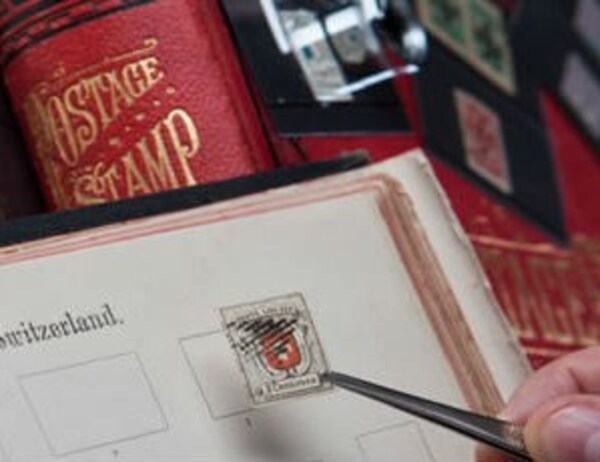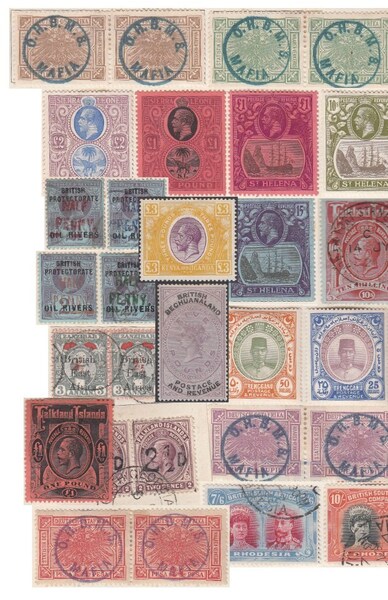Italy issued the world’s first air-mail stamp on the 20th May 1917, to commemorate inaugural return flights between Turin and Rome. During the next fifteen years, true to its artistic heritage, reputation for style and panache using skilled engraving techniques, Italian philately was at the forefront of what heralded some of the most imaginative and adventurous designs and artwork ever executed. All of which are demonstrated in the airmail issues that followed.
An example is the set of two triptychs air-mail stamps that were issued on May 20th 1933 valid for one return flight only, from Rome to Chicago that was flown by a squadron of twenty four SM55X Savoia-Marchetti flying boats under the command of the charismatic Minister of Air, General Italo Balbo. This was the largest mass formation flight ever undertaken. The stamps offer a vibrant example of the prevailing Art-Deco style of the time, utilising multi-colours and innovative designs. If one lifts the political veil they also reveal some of the unfolding world history that accompanied their production. The triptych set comprises three perforated individual stamps with an air registration label showing the Italian tricolour flag on the left, a regular postage stamp in the centre with an image of the reigning monarch, King Vittorio Emanuel III. Depending on which triptych set, on the right, is one of two types of the airmail stamp, each of which has a distinctive Art-Deco design. The inscription “Crociera Nord Atlantica” appears at the bottom. The sets bear the abbreviated name of each one of the twenty pilots who flew the sea-planes printed on the air registration label section. This meant that to own a complete set of twenty, was not only a challenge, but also expensive. It is possibly the same reason why these scarce sets are so actively collected to-day.
General Balbo was a fascist politician. Born in 1896 he had served with honour during the First World War. Opposed to socialism he had been appointed an undersecretary in the Air Ministry in 1926 following King Emanuel’s invitation to Benito Mussolini to form a government in 1922. Balbo’s task was to rebuild Italy’s Air Force. This he achieved by organising air shows, endurance tests and formation flights. The culmination of the latter was The Italian Formation Flight to the “Century of Progress Exposition 1933” held in Chicago. The twenty four planes left Orbetello near Rome on the 1st July 1933 via Holland, Ireland and Newfoundland, with eleven scheduled stopovers. The formation reached New York on the 19th July and departed Chicago to complete a double crossing of the Atlantic on the 1st August arriving in Rome on the 12th August. The intention had been to celebrate the 10th Anniversary of the Italian Fascist Government and as a display of Italian air strength. It was a great success and ranked alongside other major aviation achievements including those of Amelia Earhart and Lindbergh. General Balbo became an international celebrity and was promoted to Air Marshall. He was a politician but was first and foremost an exceptional aviator. He was appointed Governor and subsequently Commander of Italian forces in Libya.
In 1940, during an attack on an Italian air field near Tobruk by RAF Blenheim bombers, in the ensuing confusion Air Marshall Balbo’s Savoia-Marchetti 79 bomber was attacked by Italian anti-aircraft fire. Balbo’s plane crashed. Both he and his crew were killed. A remarkable acknowledgement followed. The following day a single RAF plane flew across Italian lines and dropped a small box tied with Italian tricolour ribbons. Inside was a tribute written by Air Chief Marshall Sir Arthur Longmore:
“The British Royal Air Force expresses its sympathy in the death of General Balbo - a great leader and gallant aviator, personally known to me, whom fate has placed on the other side”.


 General
General
 General
General
 General
General